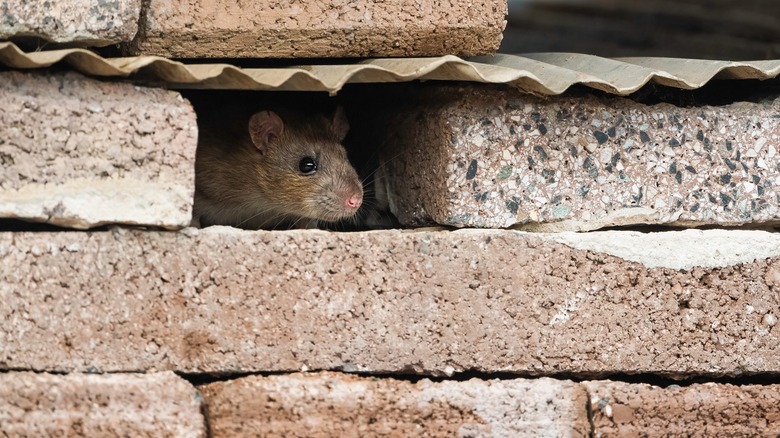The Major Pest Control Mistake That Rats Will Outsmart In No Time
A rat problem is a major cause for concern. Not only do they carry dangerous pathogens that can get humans sick, but they also carry fleas, which open you up to another host of health issues, as per the Louisana Department of Health. Aside from spreading diseases, they can also cause serious damage to your home. After all, these large rodents can chew through furniture, insulation, and even electrical wire casings, causing everything from cosmetic to structural damage. That's why homeowners usually jump into action at the first sign of a rat infestation. However, there might be a pest control mistake you're making that they can easily outsmart: using steel wool to close your entry gaps.
You might have heard that using steel wool is a great way to close any gaps in your foundation, door frames, and exterior walls to stop these rodents from entering inside. The idea is that the material is too coarse for them to chew through and that its texture would hurt their faces and mouths if they tried. While that might be true, rats have another way of getting around this — they can simply push it to the side with their paws.
Other ways to keep rats out
Steel wool is often touted as a great preventative measure to keep rats out of the house. However, these rodents are smart, so when they want to get somewhere, they will find a way inside. While rats can simply pull these metallic scrubbers out of the way, that doesn't mean you should give up hope and not seal those holes. Luckily, there are two things you can do to fix this problem. If you already bought a bunch of steel wool and can't return it, your first option is to combine it with a caulking compound to make it a more impenetrable barrier. Put the steel wool in the hole and seal it with the compound so it stays locked in place.
The second option is to seal your holes and gaps more permanently. You can use concrete sealant along your foundation to close any gaps that will easily lead them to your basement. If you have gaps in your brick or have space between your stucco and roofline, you can still use concrete sealant but a specialized version, such as Loctite PL Concrete Non-Sag Polyurethane Sealant. This will bond materials such as vinyl, wood, brick, and stucco.
